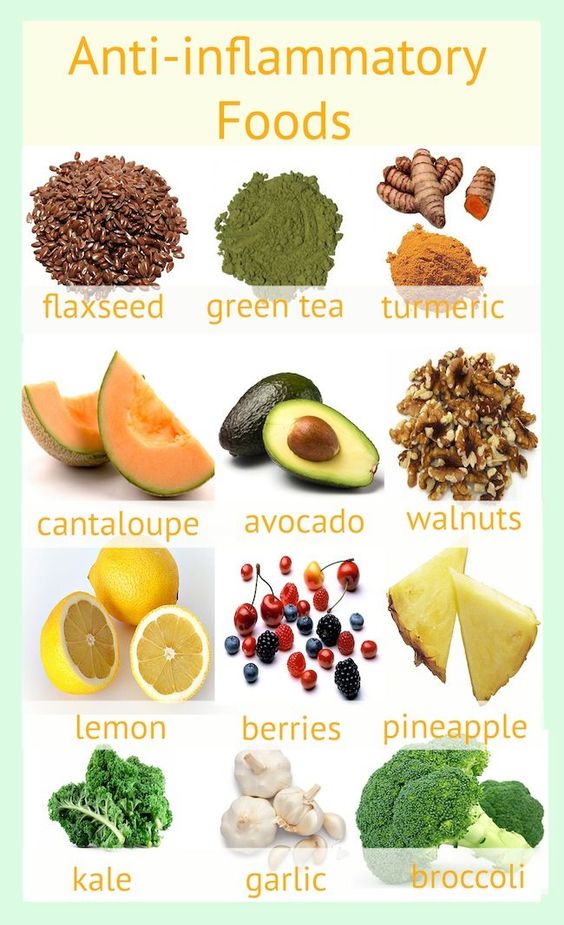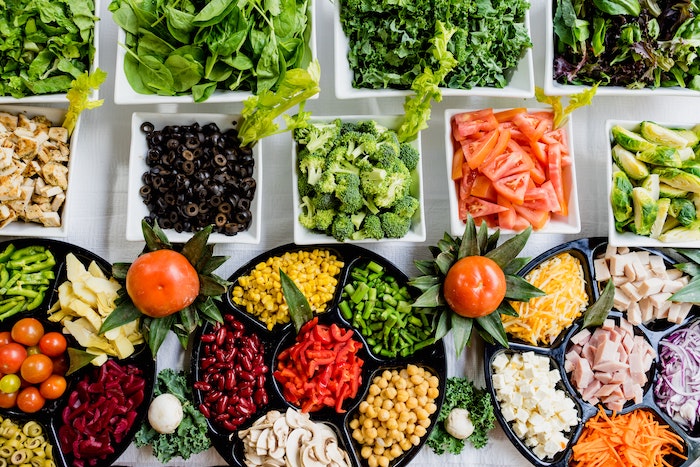Eshealthtips.com – Although no one diet can cure arthritis, certain foods can help reduce inflammation and strengthen bones and muscles. Try adding these nutrient-packed foods to your meals to ease pain and improve your quality of life. Eat two 3-ounce servings of fatty fish like salmon, tuna, and mackerel each week to get omega-3 fatty acids that can decrease inflammation. Choose lower-sodium canned options to keep sodium levels low.
Consider Not Consuming Milk Ingredients That Cause Inflammation
Milk, cheese, and yogurt are rich sources of calcium and protein. Choose low-fat options if you’re aiming to keep your cholesterol in check. Dairy products also contain casein phosphopeptides (CPP) and lactose, which facilitate passive calcium absorption in the small intestine. This may explain why epidemiological studies show a positive association between dairy food intake and bone health, while controlled trials indicate a reduced risk of osteoarthritis progression [107]. People with inflammatory conditions like rheumatoid arthritis might consider cutting out dairy to reduce inflammation, but this shouldn’t be done unless it’s advised by your doctor. Even then, an elimination diet should only be undertaken for a short period of time to see how your body responds. After that, you can start reintroducing these foods to your diet again. Choose organic milk if you can, as it’s free of antibiotics and growth hormones, and comes from cows that spend at least 30% of their time at pasture. Inflammation is a significant cause of symptoms for people with arthritis. Eating a healthy diet can help reduce inflammation and strengthen bones. This diet should include whole grains, legumes (such as beans and peas), fish, poultry, nuts and heart-healthy oils such as olive oil and avocado. It should also include berries and a variety of vegetables, especially those rich in vitamin C.
Dark leafy greens (such as kale, spinach, Swiss chard and collards) provide folate (a B vitamin), calcium, magnesium, iron, zinc and vitamin C, and are naturally low in calories. These vegetables are also high in disease-fighting phytochemicals. Consuming more greens is easy, inexpensive and a good way to start reducing arthritis symptoms. You can add them to salads or egg scrambles, or blend them into a smoothie. The body needs fat to absorb some of the vitamins found in dark leafy greens, so it is important to eat these with a source of fat (such as oil, salad dressing or meat). You can also try eating kale and other dark leafy greens in wraps. Broccoli is loaded with vitamin C (twice the minimum daily requirement), which keeps cartilage healthy and facilitates the absorption of bone-strengthening calcium. It also contains salicylic acid, a chemical that acts like aspirin to reduce inflammation but doesn’t cause bleeding problems. Laboratory research has shown that broccoli — along with other cruciferous vegetables such as kale, Brussels sprouts, bok choy, cauliflower and cabbage — contains a compound called sulforaphane. This chemical blocks enzymes that lead to the destruction of joint cartilage in osteoarthritis, a painful degenerative disease that affects millions of people around the world.
 Researchers are now testing whether consuming broccoli can prevent the development of osteoarthritis. They are conducting a small pilot study in patients scheduled to undergo knee replacement surgery, to see if eating broccoli before the procedure can help prevent arthritis symptoms from developing. If this trial is successful, it could lead to a new and safe way of reducing the pain and stiffness of osteoarthritis. Oily fish are rich in omega-3 fatty acids, which are considered “good fats” and may help reduce inflammation in the joints. Try to include a serving of oily fish – like salmon, tuna, or anchovy – two or three times a week. Canned tuna is a great choice because it offers more omega-3 than wild salmon.
Researchers are now testing whether consuming broccoli can prevent the development of osteoarthritis. They are conducting a small pilot study in patients scheduled to undergo knee replacement surgery, to see if eating broccoli before the procedure can help prevent arthritis symptoms from developing. If this trial is successful, it could lead to a new and safe way of reducing the pain and stiffness of osteoarthritis. Oily fish are rich in omega-3 fatty acids, which are considered “good fats” and may help reduce inflammation in the joints. Try to include a serving of oily fish – like salmon, tuna, or anchovy – two or three times a week. Canned tuna is a great choice because it offers more omega-3 than wild salmon.
Foods High in Saturated Fat That Can Worsen Arthritis Symptoms
Avoid foods high in saturated fats, which may increase inflammation and worsen arthritis symptoms. Also, limit processed sugars because they can cause the body to produce advanced glycation end (AGE) oxidants, which stimulate inflammation. Calcium is another important nutrient for joint health. It’s found in dairy products, dark leafy vegetables, nuts, and fish with edible bones. If you’re a vegan, be sure to include a source of calcium in your diet such as tofu and vegetables fortified with calcium.
Although no one diet can cure arthritis, certain foods can help reduce inflammation and strengthen bones and muscles. Try adding these nutrient-packed foods to your meals to ease pain and improve your quality of life. Eat two 3-ounce servings of fatty fish like salmon, tuna and mackerel each week to get omega-3 fatty acids that can decrease inflammation. Choose lower-sodium canned options to keep sodium levels low. Milk, cheese and yogurt are rich sources of calcium and protein. Choose low-fat options if you’re aiming to keep your cholesterol in check. Dairy products also contain casein phosphopeptides (CPP) and lactose, which facilitate passive calcium absorption in the small intestine. This may explain why epidemiological studies show a positive association between dairy food intake and bone health, while controlled trials indicate a reduced risk of osteoarthritis progression [107].
 People with inflammatory conditions like rheumatoid arthritis might consider cutting out dairy to reduce inflammation, but this shouldn’t be done unless it’s advised by your doctor. Even then, an elimination diet should only be undertaken for a short period of time to see how your body responds. After that, you can start reintroducing these foods to your diet again. Choose organic milk if you can, as it’s free of antibiotics and growth hormones, and comes from cows that spend at least 30% of their time at pasture. Inflammation is a significant cause of symptoms for people with arthritis. Eating a healthy diet can help reduce inflammation and strengthen bones. This diet should include whole grains, legumes (such as beans and peas), fish, poultry, nuts and heart-healthy oils such as olive oil and avocado. It should also include berries and a variety of vegetables, especially those rich in vitamin C.
People with inflammatory conditions like rheumatoid arthritis might consider cutting out dairy to reduce inflammation, but this shouldn’t be done unless it’s advised by your doctor. Even then, an elimination diet should only be undertaken for a short period of time to see how your body responds. After that, you can start reintroducing these foods to your diet again. Choose organic milk if you can, as it’s free of antibiotics and growth hormones, and comes from cows that spend at least 30% of their time at pasture. Inflammation is a significant cause of symptoms for people with arthritis. Eating a healthy diet can help reduce inflammation and strengthen bones. This diet should include whole grains, legumes (such as beans and peas), fish, poultry, nuts and heart-healthy oils such as olive oil and avocado. It should also include berries and a variety of vegetables, especially those rich in vitamin C.
A Good Way to Start Reducing Arthritis Symptoms
Dark leafy greens (such as kale, spinach, Swiss chard and collards) provide folate (a B vitamin), calcium, magnesium, iron, zinc and vitamin C, and are naturally low in calories. These vegetables are also high in disease-fighting phytochemicals. Consuming more greens is easy, inexpensive and a good way to start reducing arthritis symptoms. You can add them to salads or egg scrambles, or blend them into a smoothie. The body needs fat to absorb some of the vitamins found in dark leafy greens, so it is important to eat these with a source of fat (such as oil, salad dressing or meat). You can also try eating kale and other dark leafy greens in wraps.
Broccoli is loaded with vitamin C (twice the minimum daily requirement), which keeps cartilage healthy and facilitates the absorption of bone-strengthening calcium. It also contains salicylic acid, a chemical that acts like aspirin to reduce inflammation but doesn’t cause bleeding problems. Laboratory research has shown that broccoli — along with other cruciferous vegetables such as kale, Brussels sprouts, bok choy, cauliflower and cabbage — contains a compound called sulforaphane. This chemical blocks enzymes that lead to the destruction of joint cartilage in osteoarthritis, a painful degenerative disease that affects millions of people around the world.
 Researchers are now testing whether consuming broccoli can prevent the development of osteoarthritis. They are conducting a small pilot study in patients scheduled to undergo knee replacement surgery, to see if eating broccoli before the procedure can help prevent arthritis symptoms from developing. If this trial is successful, it could lead to a new and safe way of reducing the pain and stiffness of osteoarthritis. Oily fish are rich in omega-3 fatty acids, which are considered “good fats” and may help reduce inflammation in the joints. Try to include a serving of oily fish – like salmon, tuna, or anchovy – two or three times a week. Canned tuna is a great choice because it offers more omega-3 than wild salmon. Avoid foods high in saturated fats, which may increase inflammation and worsen arthritis symptoms. Also, limit processed sugars because they can cause the body to produce advanced glycation end (AGE) oxidants, which stimulate inflammation. Calcium is another important nutrient for joint health. It’s found in dairy products, dark leafy vegetables, nuts, and fish with edible bones. If you’re a vegan, be sure to include a source of calcium in your diet such as tofu and vegetables fortified with calcium.
Researchers are now testing whether consuming broccoli can prevent the development of osteoarthritis. They are conducting a small pilot study in patients scheduled to undergo knee replacement surgery, to see if eating broccoli before the procedure can help prevent arthritis symptoms from developing. If this trial is successful, it could lead to a new and safe way of reducing the pain and stiffness of osteoarthritis. Oily fish are rich in omega-3 fatty acids, which are considered “good fats” and may help reduce inflammation in the joints. Try to include a serving of oily fish – like salmon, tuna, or anchovy – two or three times a week. Canned tuna is a great choice because it offers more omega-3 than wild salmon. Avoid foods high in saturated fats, which may increase inflammation and worsen arthritis symptoms. Also, limit processed sugars because they can cause the body to produce advanced glycation end (AGE) oxidants, which stimulate inflammation. Calcium is another important nutrient for joint health. It’s found in dairy products, dark leafy vegetables, nuts, and fish with edible bones. If you’re a vegan, be sure to include a source of calcium in your diet such as tofu and vegetables fortified with calcium.
Reference :